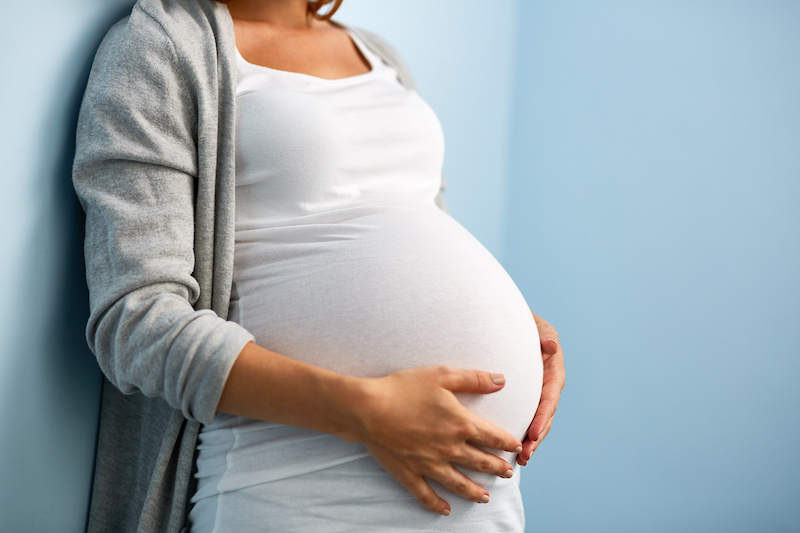From getting pregnant and fertility struggles to pregnancy, giving birth and postpartum recovery, here’s what you can anticipate as an expectant or new mum here in Singapore – and the specialists who can help you at every step of the way.

From Getting Pregnant To Postpartum
Don’t overlook preconception care!
Preparing for pregnancy isn’t just about tracking your cycles and hoping for the best. It’s about optimising your health for the best chances at a happy pregnancy and childbirth too, according to DR TIFFANY YEO-REDDY, co-founder of health and wellness clinic Zest Clinic.
That’s why a preconception screening and assessment can be a game changer for women planning to get pregnant and start a family. “We practise a personalised approach, exploring nutrition and lifestyle factors, mental health, pre-existing medical conditions and menstrual history. We also screen for hormonal imbalances, inflammatory markers and infectious diseases,” explains Dr Yeo-Reddy. By identifying issues that may affect fertility, she and her team can suggest the appropriate management before getting pregnant.
In cases of low iron reserves or iron deficiency, iron infusion can be beneficial to rapidly replenish iron levels, which is vital for a healthy pregnancy. Plus, taking prenatal supplements rich in methylfolate (such as 5-MTHF) before getting pregnant can reduce the risk of neural tube defects and support early foetal development.
As for women with chronic health conditions like diabetes and thyroid conditions? Dr Yeo-Reddy and her team will work with specialists to manage your condition before conception. They also help to ensure your preconception vaccinations are up to date.

Preparing for a smooth and safe pregnancy
When it comes to ensuring the wellbeing of mum and baby during pregnancy, Dr Yeo-Reddy takes a holistic approach:
- Zest Clinic offers personalised nutrition support for pregnant mums that meets the specific nutritional needs during each trimester of the pregnancy. They can address common pregnancy-related symptoms such as nausea, fatigue and heartburn, and, if clinically indicated, pregnancy-safe medication can be prescribed.
- Mum and baby need all the essential nutrients they can get. That’s why Dr Yeo-Reddy recommends prenatal supplements containing methylfolate, iron, calcium and other essential vitamins and minerals necessary for a healthy pregnancy.
- During pregnancy, the body’s need for iron increases significantly. Zest Clinic offers iron infusion, which is generally safe and beneficial for pregnant mums with low iron reserves or iron deficiency anaemia who are unable to tolerate oral iron supplements.
- Dr Yeo-Reddy works with pregnant mums to create a birth plan, involving preferences for labour and delivery, doulas, pain management options, labour positions and postpartum care.
Postpartum support for mums
During this whirlwind of change, wellrounded support for new mums makes all the difference. Dr Yeo-Reddy highlights a few considerations and treatments designed to nourish – not only physically but mentally and emotionally too.
- Seek nutrition and lactation support, which is vital for replenishing nutrient stores, supporting recovery and meeting the demands of breastfeeding. Plus, ongoing support from primary care physicians, paediatricians, obstetricians, doulas and lactation consultants can help with healing and recovery, breastfeeding and lactation-related concerns.
- When you’re giving birth, the pelvic floor structures undergo significant strain and trauma that may result in vaginal laxity and stress urinary incontinence. Zest Clinic’s signature Silky Intimate laser treatment uses the gentle and minimally invasive Fotona Smooth laser technology to stimulate the strengthening and tightening of vaginal tissues. At the clinic, you’ll also find photobiomodulation therapy (also known as low-level laser therapy) to help with the reduction of postpartum-related inflammation, wound healing and pain management.
- Say goodbye to baby weight with personalised and holistic weight management plans, available to help postpartum mums to achieve their weight goals in a gradual and safe manner.
- Looking to firm up skin and banish stretch marks? There’s the Fotona Dynamis Pro with Nd:YAG and Er:YAG laser technology to stimulate skin remodelling and tightening to improve skin laxity, scars and stretch marks. You can also opt for microneedling, or other injectable treatments designed to address postpartum abdominal skin laxity and stretch marks, while boosting hydration.
- Postpartum hair loss occurs due to hormonal changes associated with pregnancy and childbirth. After giving birth, oestrogen levels drop, leading to the shedding of excess hair that was retained during pregnancy. Zest Clinic offers the non-invasive Fotona Er:YAG laser therapy that helps to promote hair growth postpartum.
#01-11B Parkway Parade, 80 Marine Parade Road
9176 9378 | zest.clinic
From Bump to Baby: The Postpartum Journey Continues
Motherhood can be an exhilarating and unpredictable time. As new mums navigate adjustments and recovery in the weeks after childbirth, the six-week postnatal check-up can be especially crucial. It’s your chance to touch base with your family doctor, like DR VINO ELANGOVAN from The International Medical Clinic (IMC), and ensure you’re getting the adequate help and support you need. Here, Dr Elangovan shares some insider tips and topics to consider.

#1 Postpartum blues and depression
After giving birth, it’s normal to feel happy one minute and cry the next. Many new mums experience mood swings, poor sleep and appetite. These symptoms, commonly known as “baby blues”, usually go away within ten days after giving birth. For some, they last longer or worsen, which is known as postpartum depression.
Symptoms of postpartum depression include having thoughts about hurting yourself or your baby, or that life isn’t worth living. Shifts in attention from the mother to the child post-birth can affect mental recovery, while many women also struggle with negative postpartum body image after giving birth.
We hope to work holistically with mums to strive for good mental and physical health. Postpartum depression is most definitely treatable by our team with medications as well as the help of many skilled therapists that we work with.
#2 Pelvic floor health after pregnancy
The pelvic floor includes a group of muscles and ligaments inside a woman’s body that supports the pelvic organs. It controls the passage of urine and stool and prevents the leakage of urine when one coughs, laughs or sneezes.
Pelvic floor problems are common post-pregnancy as these muscles have supported the weight of a growing baby. Difficult deliveries such as having a large baby, multiple deliveries, instrumental deliveries or prolonged labour can cause increased damage to the pelvic floor. Hence, it’s important for you to highlight during your postpartum check-up if you are having any new urinary symptoms such as leakage or urgency and frequency. It’s also vital that you bring up symptoms such as constipation or a feeling of not being able to defecate completely.
#3 Post-pregnancy changes in libido
Sexuality and changes in libido are common concerns during postpartum that are not often discussed. Decreased oestrogen levels after giving birth can be a contributing factor. Breastfeeding too can delay the return to intercourse as oestrogen levels remain low for these women. The postpartum drop in oestrogen can result in vaginal dryness, which can make sexual intercourse uncomfortable. Certain specialised vaginal lubricants can improve this. If you feel a draggy or heavy feeling down below or a lump in your vagina, this may be due to a prolapse that has happened following a weakened pelvic floor.
During the postpartum check-up, your doctor will perform an assessment that includes a vaginal examination and a cervical cancer screen. We work closely with specialised pelvic floor physiotherapists and urogynaecologists and can seek their help if necessary.

#4 Breastfeeding challenges
Many mothers assume that breastfeeding is natural and will come easily after giving birth. In reality, many new mothers struggle, especially in the first few weeks, as this is an entirely new skill that they need to pick up in a short time.
Common issues that new mothers face include finding the latch uncomfortable, plugged ducts and engorgement. Sometimes, when milk is not removed frequently enough, this can result in mastitis, where there is inflammation of the breast tissue with redness and pain. Some mothers also experience a lack of supply and are unable to meet their baby’s demand. This can cause a great deal of stress for mothers. Some medications are available to boost milk supply, which your doctor can prescribe if necessary. We sometimes work with expert lactation consultants to help with these issues.
#5 Haemorrhoids
Many women develop haemorrhoids, especially after vaginal deliveries. Haemorrhoids are swellings containing enlarged blood vessels that are either found internally or externally around the anus. Symptoms include the feeling of swelling around the back passage, rectal itching, as well as pain and bleeding after a bowel movement. The increased pressure from straining during constipation can sometimes contribute to haemorrhoids. Increasing fluids and dietary fibres can reduce constipation. We will perform an examination and assessment when a mother comes to see us and decide if she needs medications such as pain relief, stool softeners or any further intervention.
#6 Contraception
Your six-week postnatal visit is usually an excellent time to discuss contraceptive options. Not all contraceptive options are suitable for everyone, and we will have to discuss options with you. Other options, such as the implant or intrauterine device, can be explored as a long-term method.
#02-07 Katong Square, 88 East Coast Road
6733 4440 | imc-healthcare.com
This article first appeared in the March 2024 edition of Expat Living. You can purchase the latest issue or subscribe, so you never miss a copy!
To make the most of living in Singapore, read our latest City Guide here for free!





